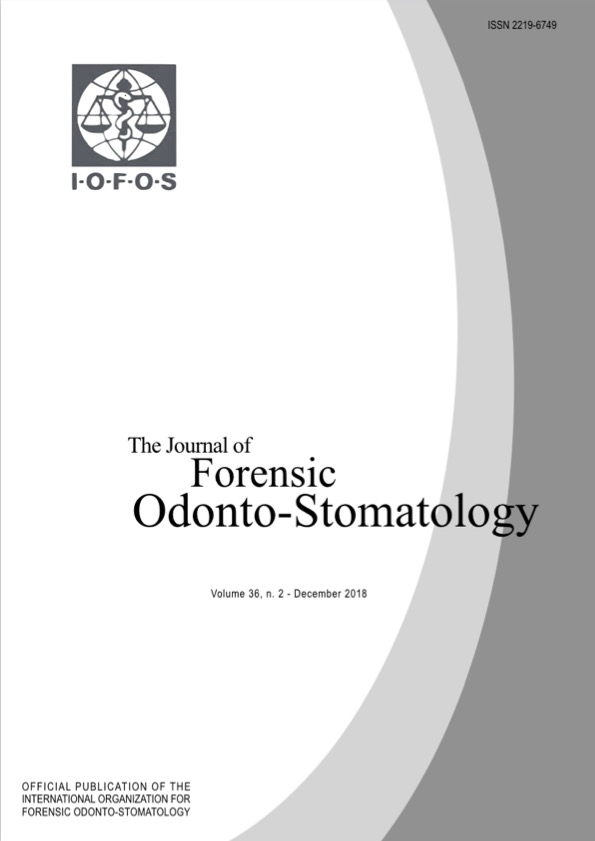Accuracy of age estimation in 6-21 year old South Indian population – A comparative analysis of clinical and radiographic methods
Keywords:
Acharya’s Indian formula, Comparative analysis, Clinical method, Dental age estimation, Radiographic method, Foti and co-workers mathematical Model 2.Abstract
Unavailability of chronological age brings to the forefront the importance of age estimation for human identification. Dental age is routinely assessed based on the calcification stages and/ or the eruption of teeth, which exhibit wide variations amongst different ethnic groups. The current study aimed at estimating the dental ages in 384 South Indian subjects aged 6-21 years, using clinical and radiographic methods and comparing the predictive accuracy of these two dental age estimation methods. For the estimation of age by clinical method, Foti and co-workers’ mathematical Model 2 was employed and for the radiographic method, Chaillet and Demirjian’s method with Acharya’s Indian formula was used. The clinical method yielded a mean error in the range of -3.16 to 4.07 years and -1.83 to 4.32 years among male and female subjects respectively whereas the radiographic method yielded an error of -9.52 to 1.96 years among males and an error of -10.72 to 2.66 years in females. The mean absolute error for the entire sample obtained by clinical method was 0.80 years and by radiographic method was 0.89 years. We found that the clinical method had a better accuracy in estimating dental age of children and adolescents when compared to the radiographic method in South Indian (Karnataka) population. However, the difference between the two is negligible implying that either of the methods can be employed in clinical practice

